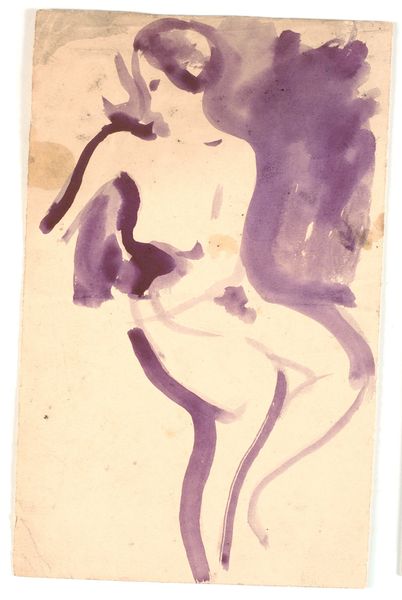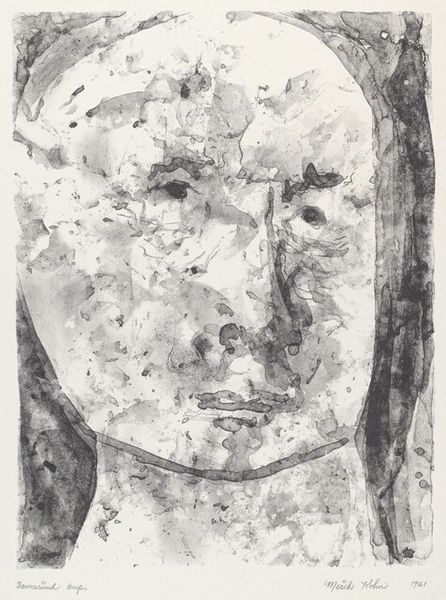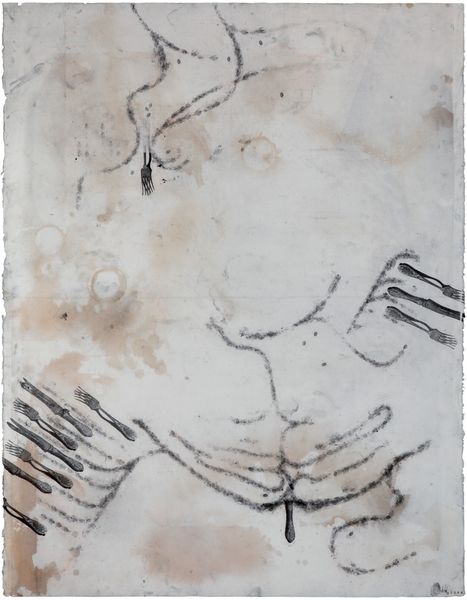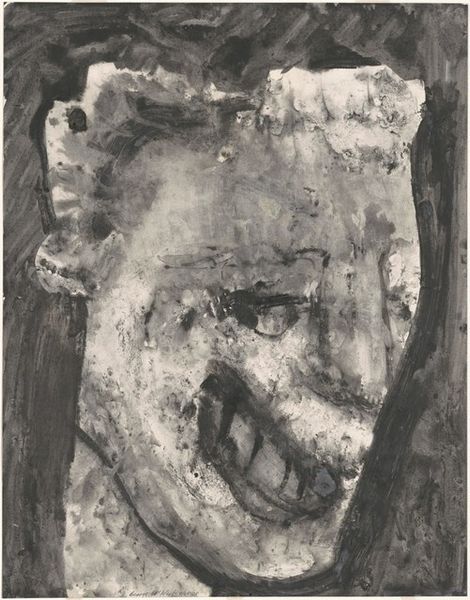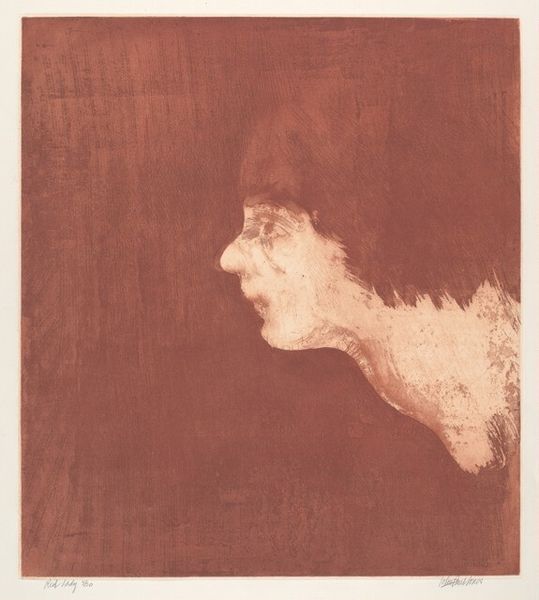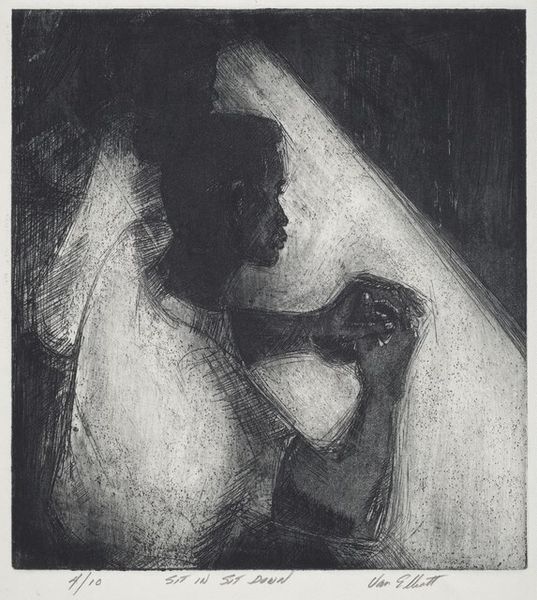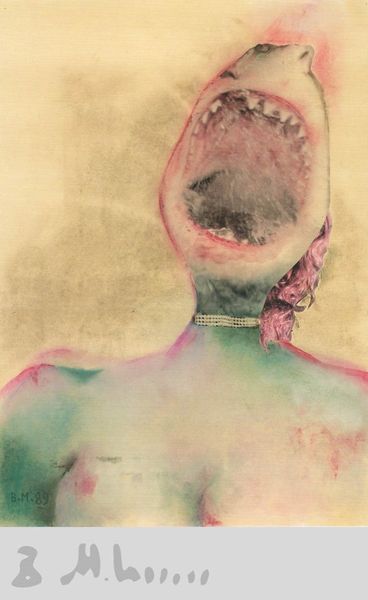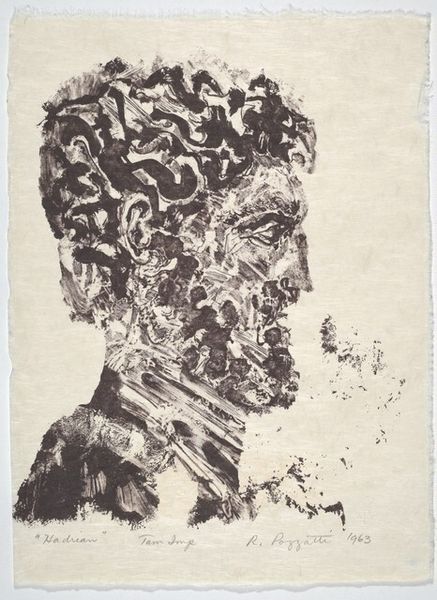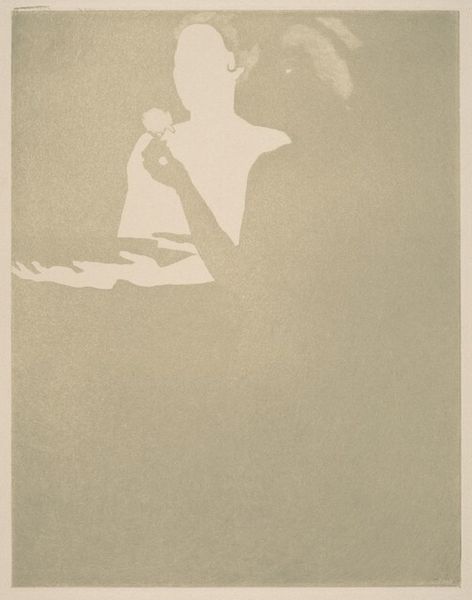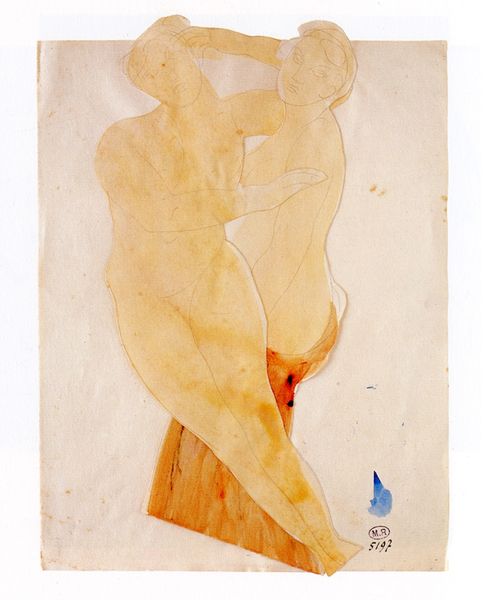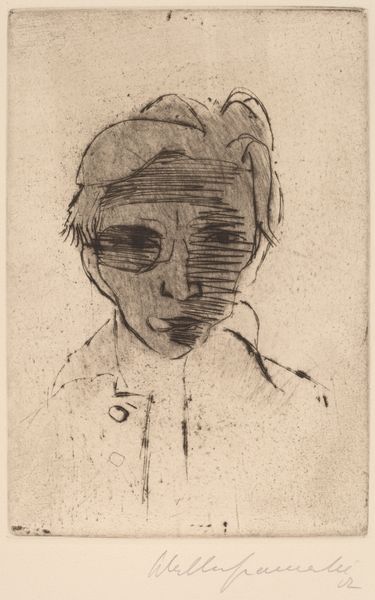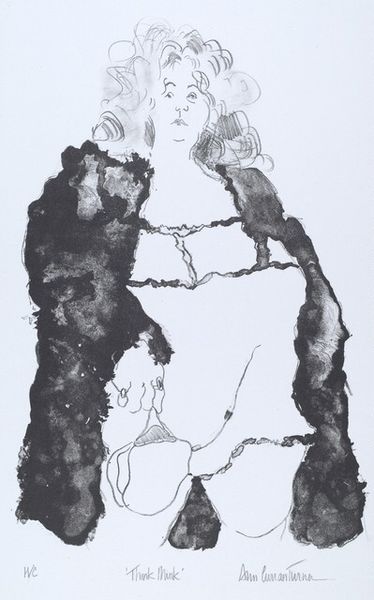
drawing, paper, ink
#
portrait
#
drawing
#
caricature
#
figuration
#
paper
#
ink
Copyright: Public domain
Curator: Look at this expressive piece, "Navet," attributed to Victor Hugo. Executed in ink on paper, it's a rather striking figural drawing. Editor: My first impression? Visceral. The exaggerated profile practically screams—there's a raw, almost primal energy here. It reminds me of Daumier, in a way, the biting satire. Curator: Daumier is a good comparison. Hugo, while celebrated as a writer, also engaged visually with the political sphere. Caricature, particularly during the 19th century, became a potent tool for social critique. Do you read this as purely political, though? Editor: It's hard to ignore the grotesque distortion of the features, the nose in particular. In iconography, noses often symbolize character, and here, it seems to amplify a sense of haughtiness or perhaps even absurdity. And, of course, the open mouth, shouting, maybe singing, perhaps arguing? Curator: Right, think of how easily caricatures were circulated as popular prints, fueling public sentiment. In Hugo’s lifetime, we’re seeing massive shifts in literacy and information dissemination. A simple ink drawing could wield immense power, beyond the traditional confines of painting. Editor: Absolutely. The economy of the line is so compelling. It's stripped bare, the emotion unfiltered. What stands out to me too, it’s unsigned, this gives it additional symbolic value – a shadow cast by history. A specter that seems poised to disrupt the status quo. Curator: Good point. This could suggest the precarious nature of dissent at the time. Hugo had spent time in exile for his republican views and openly attacked the political ambitions of Napoleon III, so any subversive, provocative symbolism has the added charge of an indictment. Editor: In any case, the title only adds more ambiguity. ‘Navet’ is ‘turnip’ in French and I have no idea how to relate it to what is shown on the image, but for sure there is a layer of intentional, sophisticated irreverence. I mean, the image is both comical and disquieting. Curator: So, from historical perspective, by dissecting these drawings we’re given insight into what fueled his other artistic endeavours as well as society, that received and shaped his expressions and criticism. Editor: Ultimately, this captivating drawing exemplifies art's profound capacity to speak truth, critique power, and stir our emotions, reminding us of the enduring influence of Victor Hugo across mediums.
Comments
No comments
Be the first to comment and join the conversation on the ultimate creative platform.
